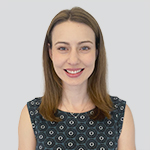CVS Health officially announced its $10.6 billion acquisition of Oak Street Health (OSH) earlier this week. Advisory Board's Paul Trigonoplos, Miriam Sznycer-Taub, Sebastian Beckmann, and Eliza Dailey discuss what that (probably very long, coupon-filled) receipt means and whether the purchase will be worth it.
What's driving CVS' latest acquisition?
When CVS rebranded to CVS Health in 2014, it kicked off a purchasing spree of 18 healthcare competencies. Now, CVS is officially acquiring OSH, bringing the company's overall acquisition spend to about $130 billion.
Our take on CVS pre-OSH purchase is that they were already on a successful path toward some sort of vertically integrated retail or home ecosystem. Their purchase of Aetna in 2017 initiated a turnaround job, as CVS' market cap has almost doubled in the years since the deal. (Compare this with Walgreens, whose market cap has dropped by >60% over the same time frame). And their recent deals continue to point to CVS' clear goal: they don't just want to be on the vertically integrating payer train, they want to be a leader on it.
To compete in that arena, you have to have two things: a payer arm and primary care. Amassing other competencies might lead to growth, but when your competitors are the likes of UnitedHealthcare* + OptumCare and Humana + CenterWell, a primary care gap leaves you exposed to those entities being better able to win Medicare Advantage (MA) and other value-based contracts. CVS needed this to play catch-up.
It's hard to argue against the strategic value this purchase brings. But what about the financial value? We come out on the "it might be worth it by the end of the decade if things go well" side of the house. That's because despite the strategic advantages, $10.6 billion is still a stupendous amount of money for what they are buying—a senior-focused primary care entity that serves just 159,000 patients (small by national standards), has never made a profit, and IPO'd in 2022 for a whopping $15 billion—or $196,000 per enrolled patient at the time.
4 scenarios that will make CVS' purchase of OSH pay off sooner
CVS is making a big bet. At baseline, we think it's smart and will pay off by the time that baby boomers stop aging into Medicare in 2030. But there are four scenarios that, if true, will bring that timeline forward and bring meaningful disruption to the market even sooner:
1. CVS can grow their MA enrollment
More enrollees mean more capitated payments which means more scale and potential margin.
Our take: Given CVS' focus on value-based care and MA contracts and MA growth in general, we can pretty safely assume their MA enrollment will grow over the next several years, especially now that they have this primary care arm. And per our modelling, the market for senior-focused primary care is also growing, so we can assume that OSH's 159,000-person panel isn't going to stay the same for long —especially if CVS puts dollars into marketing, which we know they will.
2. MA remains meaningfully profitable
Last week, CMS announced they would be reducing payments to MA programs and clawing back profits from improper risk adjustment payments.
Our take: Yes, we can expect MA profitability to become somewhat more difficult as regulators focus on preventing organizations from gaming the system. But if anything, this acquisition makes more sense because it helps CVS and Aetna create the scale that they need to make money in MA in the face of profitability changes. Increased scrutiny might stretch the time horizon until the deal's value is fully realized, but that's it.
3. CVS can accelerate Oak Street's growth — and their ability to reduce downstream utilization at a wider scale
Currently, Oak Street has 169 clinics but aims to have 300 by 2026. This growth may seem low given their valuations, but it makes sense when you consider that Oak Street uses a "'build and grow"' model to launch its clinics instead of buying existing practices. This means that it takes a few years for each clinic to get up to speed and become profitable., For this reason, Oak Street has yet to see an overall profit.
Our take: We recently did some analysis on the savings potential that senior-focused primary care can achieve, and based on the external literature and some modeling on Medicare spending on avoidable hospitalizations, we assumed that the average savings in an avoided hospitalization for an MA patient who is enrolled in a senior-focused primary care panel is about $12,000.
CVS will need a LOT of avoided $12,000 visits to get to a $10.6 billion value (we know that doesn't account for SNF-avoidance savings, but you get the point). Scaling the model to reach as many patients as possible is the easiest way cut downstream spend. We expect CVS to focus on getting Oak Street practices up and running faster, but local market forces and internal cultural barriers may hinder the expedience that CVS probably has in mind.
4. CVS can integrate Oak Street with their other competencies that keep people healthy outside of the hospital
One of the challenges with senior-focused primary care is identifying the right patients and caring for them in cost-effective ways. CVS has Signify, which can do home visits for MA patients. This should help them identify which patients would benefit most from a senior-focused primary care model if Signify can work alongside Oak Street to deliver care outside of the hospital.
And with Aetna, there will need to be a similar integrative effort to ensure patients are steered to these delivery arms when possible. Similar synergies can come from their suite of pharmacy services and pharmacy benefit manager savings.
Our take: This is the make-or-break factor. How well CVS can actually integrate these assets into a meaningful suite for their MA beneficiaries will dictate the deal's long-term value as well as how soon the deal will be felt regionally or nationally. It will also determine whether CVS can make full use of any growth that Oak Street has into more markets, especially more rural ones where Signify operates. We expect at least a few years until every piece is integrated.
*Advisory Board is a subsidiary of UnitedHealth Group, the parent company of UnitedHealthcare. All Advisory Board research, expert perspectives, and recommendations remain independent.
Don't miss out on the latest Advisory Board insights
Create your free account to access 1 resource, including the latest research and webinars.
Want access without creating an account?
You have 1 free members-only resource remaining this month.
1 free members-only resources remaining
1 free members-only resources remaining
You've reached your limit of free insights
Become a member to access all of Advisory Board's resources, events, and experts
Never miss out on the latest innovative health care content tailored to you.
Benefits include:
You've reached your limit of free insights
Become a member to access all of Advisory Board's resources, events, and experts
Never miss out on the latest innovative health care content tailored to you.
Benefits include:
This content is available through your Curated Research partnership with Advisory Board. Click on ‘view this resource’ to read the full piece
Email ask@advisory.com to learn more
Click on ‘Become a Member’ to learn about the benefits of a Full-Access partnership with Advisory Board
Never miss out on the latest innovative health care content tailored to you.
Benefits Include:
This is for members only. Learn more.
Click on ‘Become a Member’ to learn about the benefits of a Full-Access partnership with Advisory Board
Never miss out on the latest innovative health care content tailored to you.




